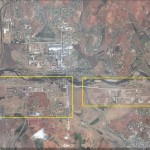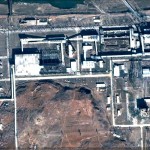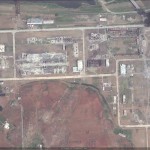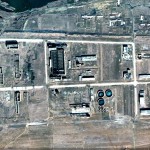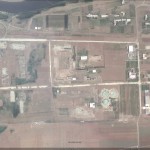A recent New York Times op-ed article by Aung Lynn Htut, formerly a high-ranking Burmese military intelligence officer who defected in 2005 while he served as an attaché at the Burmese embassy in Washington, shed new light on the history of the still murky relationship between Burma and North Korea, two of the world’s most isolated, secretive and oppressive regimes.
Burma broke diplomatic relations with North Korea in 1983, when North Korean agents attempted to assassinate the South Korean president on Burmese soil. But according to Aung Lynn Htut, shortly after current junta-chief Snr-Gen Than Shwe assumed power in 1992, he surreptitiously moved to renew ties with Pyongyang.
“Than Shwe secretly made contact with Pyongyang. Posing as South Korean businessmen, North Korean weapon experts began arriving in Burma. I remember these visitors. They were given special treatment at the Rangoon airport,” Aung Lynn Htut said in his June 18 article.
The junta kept its renewed ties with North Korea secret for more than a decade because it was working to establish relationships with Japanese and South Korean businesses, Aung Lynn Htut said. By 2006, however, “the junta’s generals felt either desperate or confident enough to publicly resume diplomatic relations with North Korea.”
In November 2008, the junta’s No 3, Gen Shwe Mann, visited North Korea and signed a memorandum of understanding, officially formalizing military cooperation between Burma and North Korea. Photographs showed him touring secret tunnel complexes built into the sides of mountains thought to store and protect jet aircraft, missiles, tanks and nuclear and chemical weapons.
According to Aung Lynn Htut, Lt-Gen Tin Aye, the No.5 in the Burma armed forces and the chief of Military Ordnance, is now the main liaison in the relationship with Pyongyang. Tin Aye has often traveled to North Korea as well as attended ceremonies at the North Korean embassy in Rangoon.
In September 2009, The New Light of Myanmar reported that Tin Aye went to the anniversary celebration of the Democratic People’s Republic of Korea (DPRK), held in a hotel in Rangoon. In February, Tin Aye, along with other senior officials, attended the birthday event of the Dear Leader of North Korea at the embassy.
Flights and ships from North Korea to Burma have been carrying more than just Burmese generals. Analysts, including Burma military expert Andrew Selth, say that for years Burma and North Korea have used a barter system whereby Burma exchanges primary products for North Korean military technologies.
In June 2009, a North Korean ship, the Kang Nam I, was diverted from going to Burma after being trailed by the US navy. Then in April, another North Korean ship, the Chong Gen, docked in Burma carrying suspicious cargo, allegedly in violation of the UN Security Council Resolution 1874, which restricts North Korea from arms deals and from trading in technology that could be used for nuclear weapons.
In May, the seven-member UN panel monitoring the implementation of sanctions against North Korea said in a report that Pyongyang is involved in banned nuclear and ballistic activities in Iran, Syria and Burma with the aid of front companies around the world.
According to the UN report, a North Korean company, Namchongang Trading, which is known to be associated with illicit procurement for Burma’s nuclear and military program and is on the US sanctions list, was involved in suspicious activities in Burma.
The report also noted three individuals were arrested in Japan in 2009 for attempting to illegally export a magnetometer—a dual-use instrument that can be employed in making missile control system magnets and gas centrifuge magnets—to Burma via Malaysia allegedly under the direction of another company known to be associated with illicit procurement for North Korea’s nuclear and military programs.
The UN experts also said that the Korea Kwangson Banking Corporation has handled several transactions involving millions of dollars directly related to deals between Burma and the Korea Mining Development Trading Corporation.
With this string of events and the suspicions surrounding them as a dramatic lead in, on June 4, Al Jazeera aired a news documentary prepared by the Democratic Voice of Burma (DVB) which was written by Robert Kelley, a nuclear scientist and former director of the International Atomic Energy Agency (IAEA). The DVB report claimed that the ruling military junta in Burma is “mining uranium, converting it to uranium compounds for reactors and bombs, and is trying to build a reactor and/or an enrichment plant that could only be useful for a bomb.”
The IAEA wrote to Burma’s agency representative, Tin Win, on June 14 and asked whether the information provided in the DVB report was true. Burma, which is a member of the IAEA, a party to the Nuclear Non-Proliferation Treaty and a signatory to the Southeast Asia Nuclear-Weapon-Free Zone Treaty, responded with a letter stating that the DVB report allegations are “groundless and unfounded.”
“No activity related to uranium conversion, enrichment, reactor construction or operation has been carried out in the past, is ongoing or is planned for the future in Myanmar [Burma],” the letter said.
The letter also noted that Burma is a signatory of the Nuclear Non-Proliferation Treaty and the agency’s so-called safeguards agreement. “As stated in the safeguards agreement, Myanmar will notify the agency if it plans to carry out any nuclear activities,” the letter said.
The regime, however, has not signed the IAEA’s Additional Protocol, meaning that the agency has no power to set up an inspection of Burma’s nuclear facilities under the existing mechanism known as the Small Quantities Protocol.
Previously, on June 11, Burma’s state radio and television news had reported the Foreign Ministry’s denial of the allegations in the DVB report. The denial claimed that anti-government groups in collusion with the media had launched the allegations with the goal of “hindering Burma’s democratic process and to tarnish the political image of the government.”
The Foreign Ministry denial also addressed Nyapyidaw’s relationship with Pyongyang. “Following the re-establishment of diplomatic relations, Myanmar [Burma] and the DPRK, as independent sovereign states, have been engaging in promoting trade and cooperation between the two countries in the same way Myanmar is dealing with others,” the ministry said in its statement.
The regime did acknowledge that the Chong Gen docked at Thilawa Port near Rangoon in April. But the statement said the North Korean vessel was involved in importing cement from North Korea and exporting rice from Burma.
But in an article for Asia Times online, Burma analyst Bertil Linter noted that, “if carrying only innocuous civilian goods, as the statement maintains, there would seemingly have been no reason for authorities to cut electricity around the area when the Chong Gen, a North Korean ship flying the Mongolian flag of convenience, docked on the outskirts of Yangon.”
“According to intelligence sources, security was tight as military personnel offloaded heavy material, including Korean-made air defense radars. The ship left the port with a return cargo of rice and sugar, which could mean that it was, at least in part, a barter deal. On January 31 this year, another North Korean ship, the Yang M V Han A, reportedly delivered missile components also at Yangon’s Thilawa port,” Linter said.
Strategypage.com, a military affairs website covering armed forces worldwide, said, “Indications are that the North Korean ship that delivered a mysterious cargo four months ago, was carrying air defense radars (which are now being placed on hills up north) and ballistic missile manufacturing equipment. Dozens of North Korean technicians have entered the country in the last few months, and have been seen working at a military facility outside Mandalay. It’s unclear what this is for. Burma has no external enemies, and ballistic missiles are of no use against internal opposition.”
In his Asia Times online story, Lintner noted that on June 24, the DVB reported that a new radar and missile base had been completed near Mohnyin in Myanmar’s northern Kachin State, and he reported that work on similar radar and missile bases has been reported from Kengtung in eastern Shan State,160 kilometers north of the Thai border town of Mae Sai.
“Since Myanmar is not known to have imported radars and missile components from any country other than North Korea, the installations would appear to be one of the first visible outcomes of a decade of military cooperation,” Lintner said.
Lintner also reported that Western intelligence sources know that 30 to 40 North Korean missile technicians are currently working at a facility near Minhla on the Irrawaddy River in Magwe Division, and that some of the technicians may have arrived overland by bus from China to give the appearance of being Chinese tourists.
North Korea has also issued adamant denials with respect to allegations regarding its relationship with Burma.
According to the Korean Central News Agency (KCNA), on June 21 Pyongyang said, “The US is now making much fuss, floating the sheer fiction that the DPRK is helping Myanmar [Burma] in its nuclear development.”
The KCNA often highlights the close relationship between North Korea and Burma.
On June 20, the Pyongyang news agency reported that ex-Col Than Tun, deputy chairman of the Union of Myanmar Economic Holding Ltd., sent a statement cheering Kim Jong Il’s 46th anniversary at the Central Committee of the ruling Workers’ Party of Korea.
On April 18, Korean state-run- media reported that Than Tun also issued a statement cheering the 17th anniversary of Kim Jong Il’s chairing of North Korea’s National Defense Commission.
“Kim Jong Il’s field inspection of KPA [Korean People’s Army] units served as a main source that helped bolster [North Korea’s] self-reliant defense capability in every way,” the statement noted.
Military sources said the Union of Myanmar Economic Holding Ltd, managed by the junta, is responsible for purchasing imported weapons for Burma’s armed forces, including transferring money to overseas banks such as Korea Kwangson Banking Corporation.
Meanwhile, in addition to its escalating relationship with North Korea, the Burmese military regime has recently boosted ties with Iran, which according to the UN report is also allegedly receiving nuclear and missile technologies from North Korea.
In recent years, Burmese and Iranian officials visited their counterparts homeland for the purported purpose of improving economic ties. Observers, however, said Than Shwe has made a tactical decision to develop relationships with other “pariah states,” particularly enemies of the US, to relieve Western pressure on his regime.
Iranian Deputy Foreign Minister Mohammad Ali Fathollahi met Burmese Foreign Minister Nyan Win and Minister of Energy Lun Thi during his trip to Burma on June 15-17.
“The two sides reiterated their desire to further expand the ties of friendship and economic cooperation and to increase cooperation in the regional international forums such as [the] United Nations and Non-Aligned Movement,” The New Light of Myanmar reported on June 18.
Fathollahi’s visit came three months after Maung Myint’s visit to Iran on March 8-11, when he met Iranian Foreign Minister Manochehr Mottaki and Deputy Minister of Petroleum H. Noghrehkar Shirazi.

